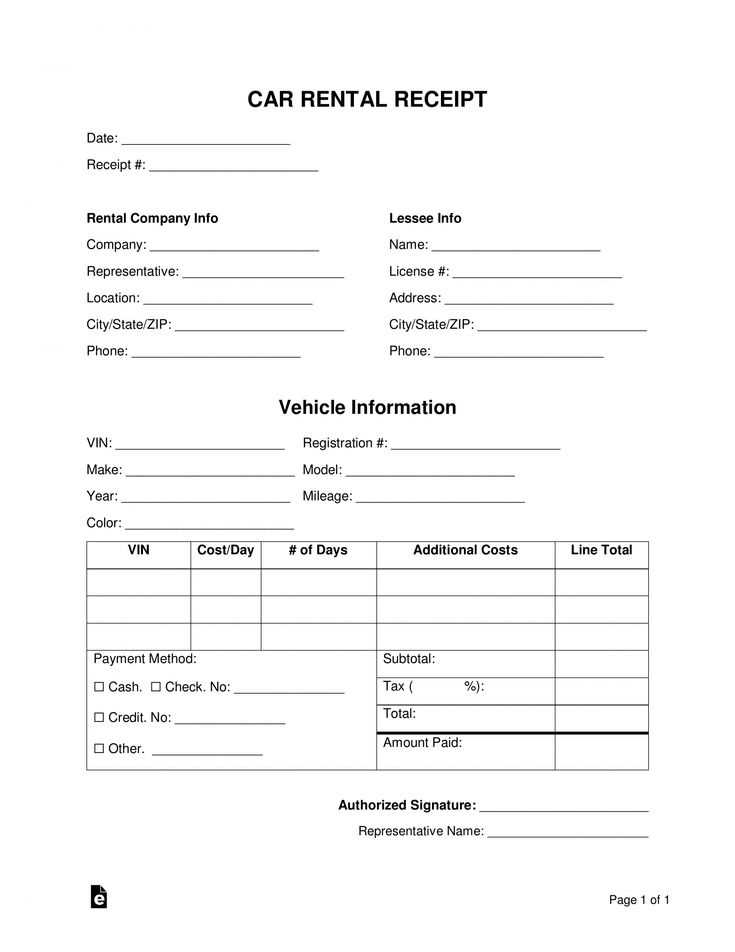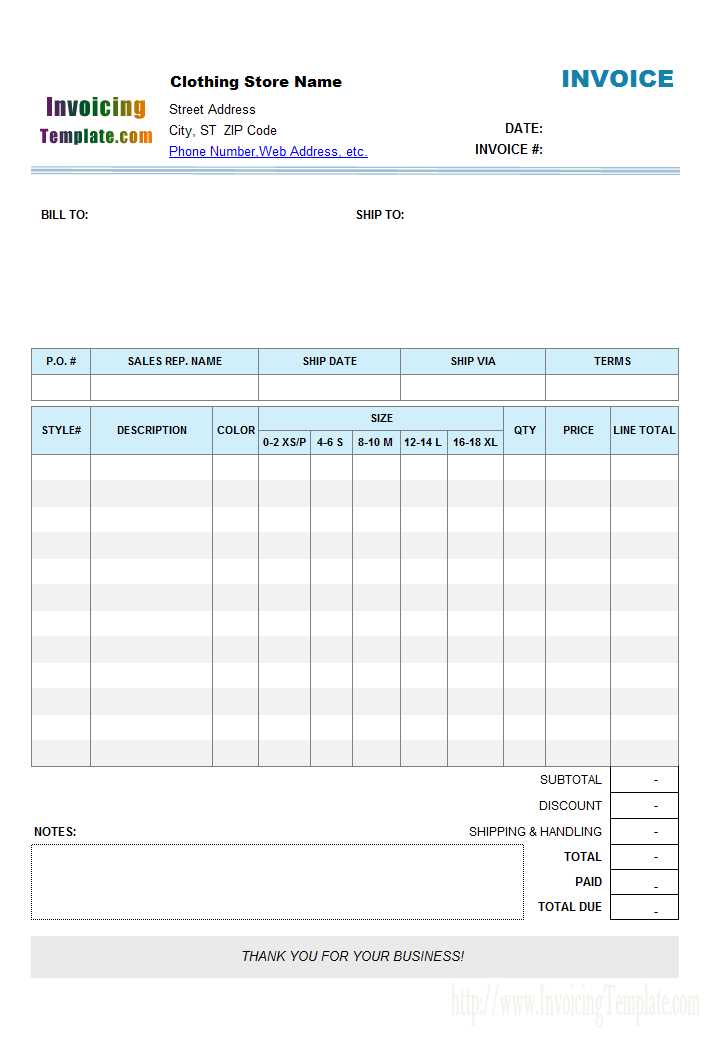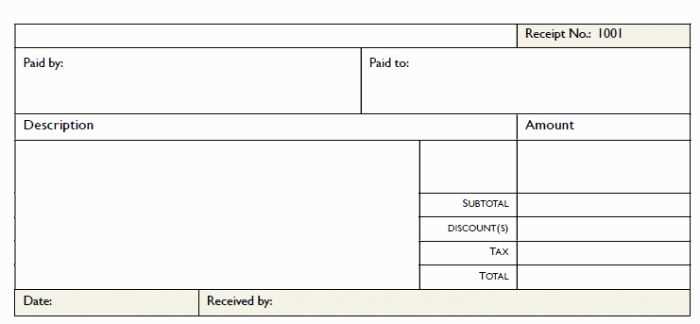
Key Elements of a Pickup Receipt

A pickup receipt serves as confirmation that an item has been collected or picked up. To make sure your template meets basic requirements, include the following details:
- Date and Time: Clearly indicate the exact time and date of the pickup.
- Pickup Location: Specify the address where the item is being picked up from.
- Recipient Name: Include the name of the person receiving the item or responsible for the pickup.
- Item Description: Describe the item(s) being picked up, including any relevant details like size, color, or model number.
- Pickup Method: Note whether the item was picked up in person or through a service (e.g., delivery driver, courier).
- Signature: A space for the recipient’s signature or confirmation of receipt is necessary for validation.
Template Structure

The template should be easy to follow. Here’s how to organize it:
- Header: Include your company name, logo, and contact information at the top of the receipt.
- Pickup Details Section: Provide fields for date, time, and location of the pickup.
- Item Information: List the items with clear descriptions and quantities.
- Recipient’s Information: Include a space for the recipient’s name, contact number, and signature.
- Footer: Add any additional notes, terms, or policies, like return instructions if relevant.
Formatting Tips

- Clarity: Use bold text for headings to make the information stand out.
- Spacing: Ensure adequate space between sections to avoid clutter.
- Font Size: Use legible fonts like Arial or Helvetica in size 12 or 14 for readability.
- Logo Placement: Position your logo at the top-left corner for easy recognition.
By following these guidelines, your pickup receipt template will be both functional and professional.
Pickup Receipt Template: A Comprehensive Guide
Choosing the Right Layout for Your Receipt
Key Information to Include in the Template
Customizing the Format for Various Pickup Scenarios
How to Add Branding Elements to the Receipt
Ensuring Legal Compliance in the Document
Digital vs. Paper Receipts: Best Practices
When designing a pickup receipt template, prioritize clarity and functionality. The layout should allow users to easily locate key details such as the transaction ID, item description, pickup date, and customer information. Keep the format clean and simple, ensuring that each section is well-defined and easy to read.
Key details to include in the receipt template are: a unique transaction number, the name and contact of the business, pickup location, itemized list of goods or services, total cost, date, and time of pickup. Additionally, ensure there is space for customer signatures or acknowledgment, and a disclaimer if applicable.
Adjust the format depending on whether the pickup is for a single item or multiple items. For multiple items, make sure the template accommodates a detailed list. In cases of digital or curbside pickups, add instructions or a reminder for customers to verify their ID at the pickup point. Each format should be tailored to the pickup method, ensuring convenience for both the business and the customer.
Branding elements such as your logo, company colors, and fonts can be added to the receipt to enhance your business’s visibility. However, keep the design balanced, so it does not overwhelm the essential details. The branding should be present but not distract from the receipt’s core function: confirming the transaction and providing necessary details.
To stay compliant with regulations, include any required legal disclaimers or tax information. Depending on your jurisdiction, some industries may require additional details like item warranty information, environmental fees, or specific consumer rights notices. Ensure these are easily visible and fit seamlessly within your receipt template.
For businesses offering both digital and paper receipts, consider the advantages and challenges of each. Digital receipts are eco-friendly and allow for easy access and storage. However, paper receipts may still be necessary for certain customers or legal purposes. Offering both options lets customers choose their preferred format while maintaining legal compliance and customer satisfaction.


